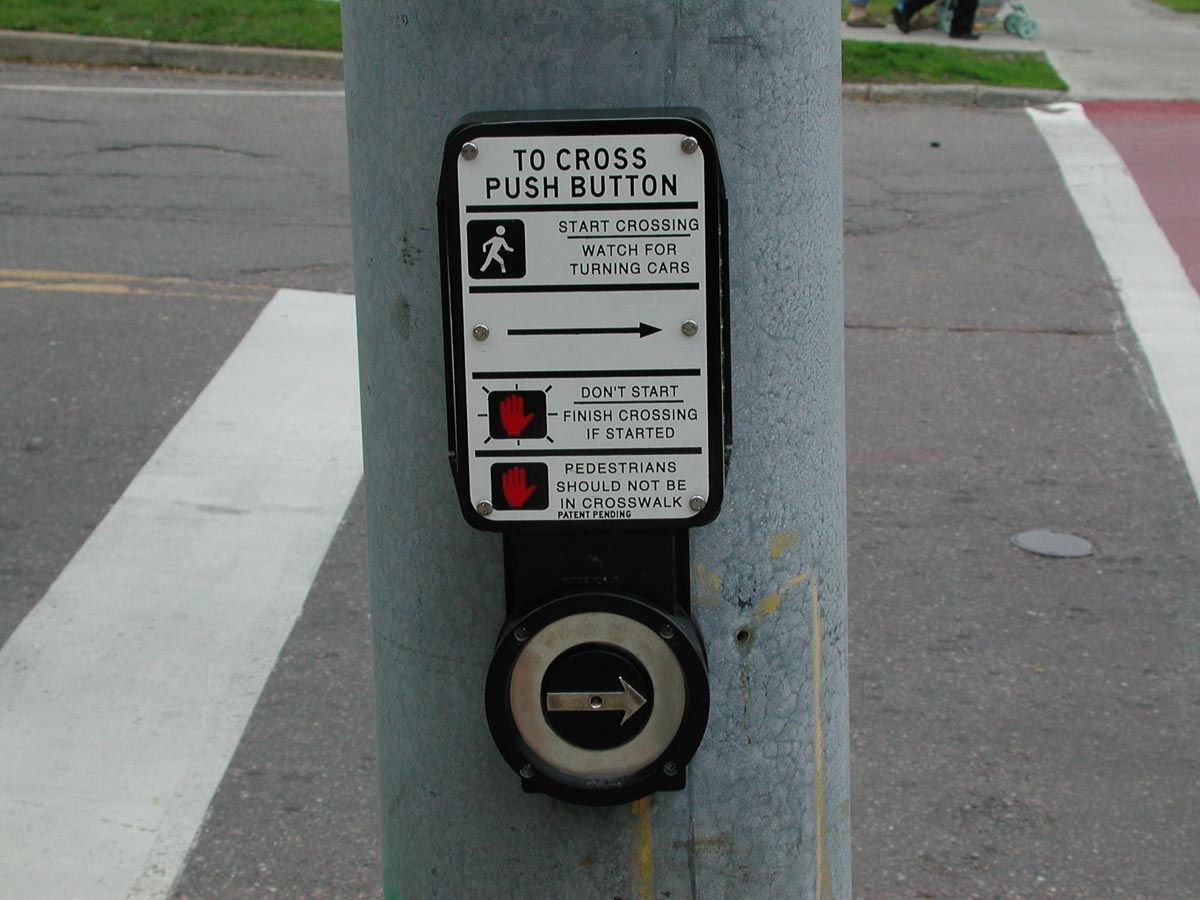Remember that article from the Boston Globe that said those pedestrian buttons you press to safely cross a busy intersection are, at least in Boston, nothing more than placebos? The city, the article stated, simply cannot allow a single person to manipulate the traffic cycle, hence the decorative buttons for pedestrians.
In Houston, those buttons -- if they are fully functional -- appear to actually do something. Geoff Carleton, a principal at Traffic Engineers, said that as far as he knows, there aren't any placebo buttons in Houston. "However, we do have ones that don't work, that are broken," Carleton said.
For the most part, Carleton said the intersections that have push buttons are put in places where they are designed to function. That is, allowing pedestrians to cross the road in a safe and efficient manner.
The push buttons work like this: you come upon an intersection and want to cross the street, so you push the button. What that does, according to Carleton, is let the signal operations know that someone is planning to cross the street, giving the pedestrian enough time to get across when their turn comes around. So, for example, if you don't push the button and just wait, you could run the risk of not having enough time to cross the street because the signal operations don't know there is someone to cater to.
"In places like downtown where you have signals that don't have push buttons, they automatically just come up as walk signals because we have existing pedestrian demand," Carleton said.
In essence, said Carleton, the push buttons are there to make things more efficient --- for cars. "In places where you have a lot of pedestrians, you really don't want that button because you want the (pedestrians) to have priority in places like downtown or Midtown," he said, rather than making them wait for a chance to cross, those opportunities should be a regular part of the traffic pattern.
But, a great question to ask, Carleton said, is whether or not we need the buttons at all. In places that are trying to promote increased walkability, pedestrian buttons could actually decrease the flow of traffic, he said. And Boston and Houston are on opposite sides of the spectrum when it comes to walkability. Boston is much denser than Houston, a city known for its sprawl, and increased density makes higher pedestrian traffic flow much easier to achieve in a general context.
"If you compare Boston to the central core of Houston, I think we're in a position where we can start being more aggressive about promoting walkability in places where destinations are close enough to each other to walk," Carleton said.

